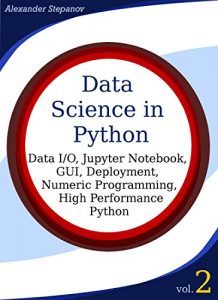This volume covers the fundamentals of scientific Python programming, and I assume you are familiar with Python 3. If you need help with obtaining and setting up a scientific Python 3 distribution, make sure to check out volume 1 of this series.
In this volume I will show how to:
You might also want to look at volume 3 describing plotting with Matplotlib and using Python together with SQLite database for data analysis.
In this volume I will show how to:
- Read data from a tab delimited text file, sort, filter, and recover from errors
- Save data in a tab delimited text or in rich Microsoft Excel format
- Use an IPython notebook to quickly prototype your program, explore your data interactively, document, and share your research.
- Give your program a Graphic User Interface (GUI) to make it useful for non-programmers.
- Package a Python program for deployment on other computers
- Use Numpy for number crunching
- Make the Python program run as fast as compiled code
- Use multiple cores or processors for parallel execution of a Python program
You might also want to look at volume 3 describing plotting with Matplotlib and using Python together with SQLite database for data analysis.






